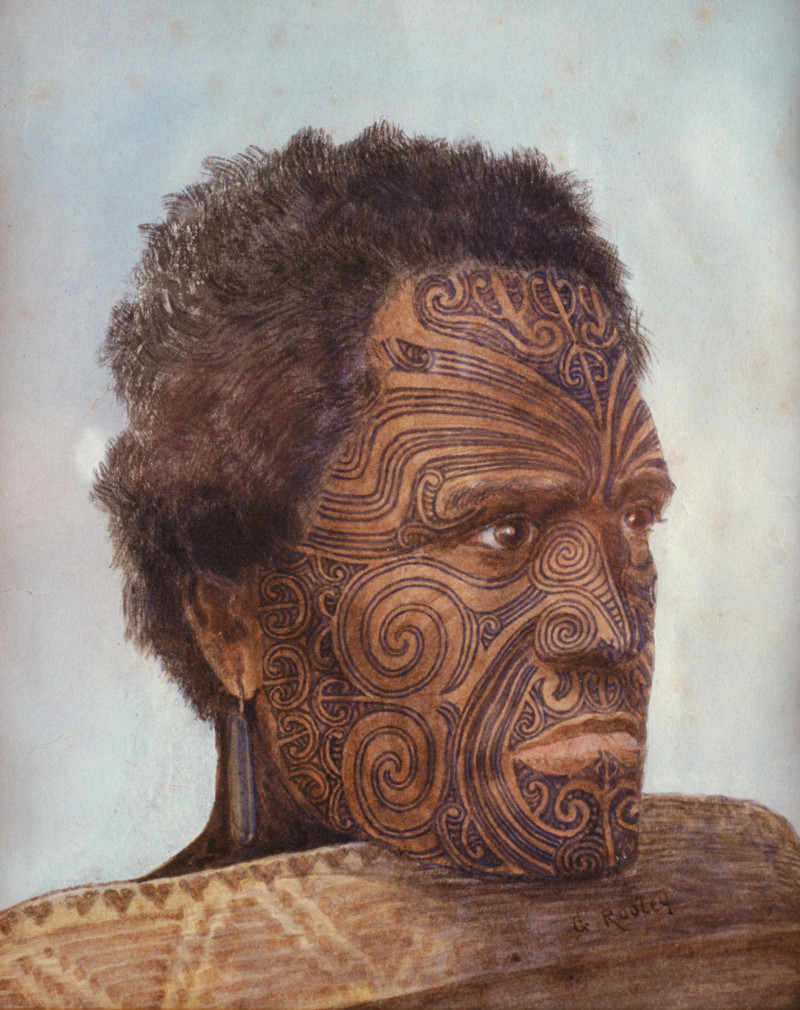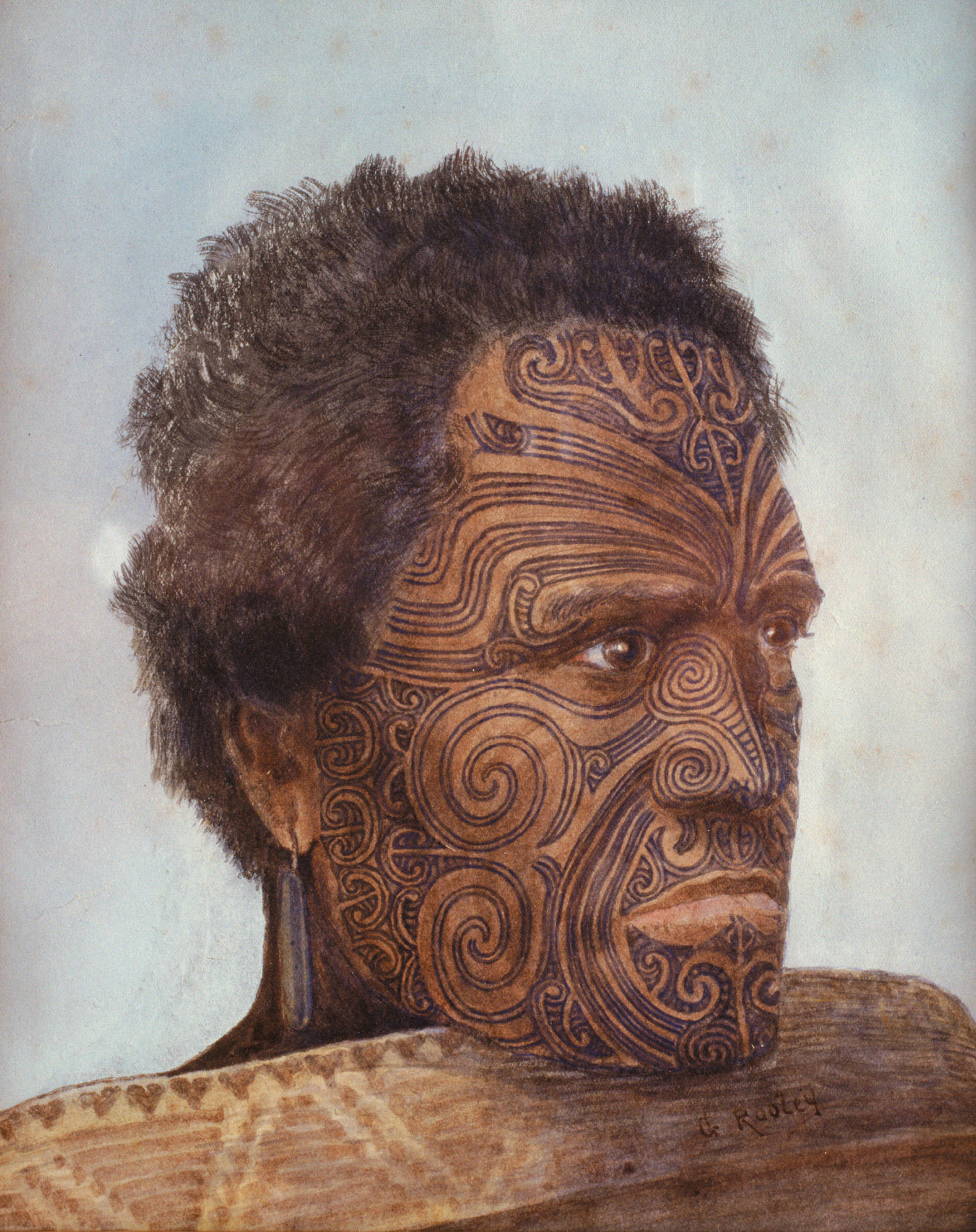ROBLEY, Horatio Gordon;
Tomika Te Mutu
1866
Watercolour on paper
285 x 240mm

The following two texts were written for Te Huringa/Turning Points and reflect the curatorial approach taken for that exhibition.
Peter Shaw
Robley arrived in New Zealand from Madrid in January 1864, as an ensign in the 68th Durham Light Infantry. The Governor, Sir George Grey, had sent a British force to Tauranga in the hope of preventing Waikato Māori from receiving reinforcements and supplies sent by the Ngāi Te Rangi chief Rāwiri Puhirake and others. Robley took part in the Battle of Gate Pā, which saw an outnumbered Māori force inflict a major defeat on the British imperial army in the last days of April 1864. In July, after further fighting, Māori surrendered to imperial troops.
Between 1864 and 1866, when he returned to England, Robley spent much of his spare time at Otūmoetai, Matapihi, Maungatapu, and Maketū. There, he made a great many sketches that formed the basis of his later role as an authority on Māori art and particularly tā moko. He was also the father of a child, Hamiora Tu Ropere, born to Harete Mauao of Matapihi.
His subject here, Tomika Te Mutu, chief of Motuhoa, a small island within Tauranga harbour, wore a highly detailed moko, which, not surprisingly, attracted Robley, whose interest in the subject was intense. Tomika was also painted by Gottfried Lindauer.
Jo Diamond
The famous Māori entertainer Dalvanius Prime once used the internet to comment on the life of his direct ancestor Horatio Gordon Robley, thus giving us an opportunity to consider the convolutions not only of Māori identity but also of historical events. It is tempting to confine engagement with this painting to a discussion of Robley’s fascination with tā moko, without much focus on Tomika Te Mutu. His mana as rangatira of the iwi Ngāi Te Rangi in Robley’s day has been perpetuated, most often stereotypically as a vivid encapsulation of the fierce and frightening ‘noble savage’ that non-Māori have periodically applied to Māori men. Other stories, yet to reach the printed page, could be told by his descendants.
While a Pākehā audience may be fascinated by this image of Tomika Te Mutu, the fact is that he shared his role as tupuna with his illustrator Horatio Robley. So, despite the artistic liberties Robley takes, such as posing Tomika dressed in an inverted kaitaka, with its hem used as a collar, and the control over Tomika’s representation that such actions entail, both men have a more equalised status in Ngāi Te Rangi whakapapa. The irony of their shared progenitor role should not be disregarded. Māori perceptions of people always rest firmly on whakapapa and an individual’s position within it. This was the case in Robley’s day as much as it is today. However, it remains a moot point whether the artist would have seen himself in this light at the time of his early departure from the Bay of Plenty to England.
Exhibition History
Te Huringa/Turning Points: Pākehā Colonisation and Māori Empowerment, Sarjeant Gallery Te Whare o Rehua, Whanganui, 8 April to 16 July 2006 (toured)
Provenance
1986–
Fletcher Trust Collection, purchased from McArthur and Company, 12 August 1986, lot 340
–1986
Unknown

